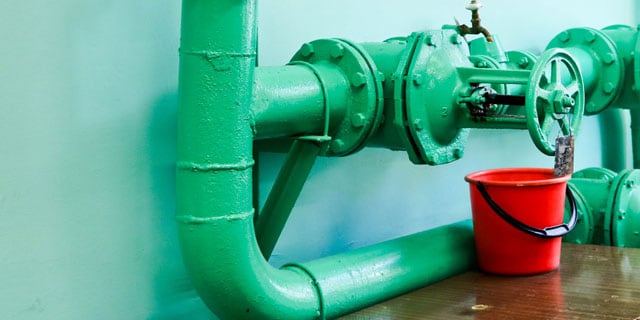Causes of Fluid System Leaks, and What it Costs You

Fluid system leaks happen in most plants. You are responsible for safety in your plant. You also want it to be profitable, and the smallest leak can cause problems. How do leaks occur, and why? Whether you are a pulp and paper facility, processing oil and gas, or doing exacting instrumentation, this blog can help. In it we will discuss how to develop a strategy to address and reduce leaks in your facility, and we'll show you how to locate and test for leaks.
What Leaks Cost
Maybe you're not convinced that leaks are a problem in your facility. Leaks are a common occurrence in plants, and there are ways that they can affect your bottom line.
- Sources estimate that facilities waste millions of gallons of hydraulic fluids each year. Hydraulic fluid costs about $40 a gallon.
- Your plant reduces production every time you shut down to fix a leak. One typical cause of premature wear and machine failure in equipment is loss of fluid lubrication. You lose profits during that downtime.
- It's easy to produce an off-spec product if your instrument calibration is off because of a leak. When that happens, you may have to rework the material, sell it at a lower price, or start over, wasting critical time and resources.
- Leakage can create slips and accidents, affecting the safety and comfort of your team. Fugitive emissions are also dangerous for your employees and can be costly to repair.
- You can avoid serious fines for noncompliance if you address leaks before they become systems and equipment violations.
Three Common Causes of Fluid System Leaks
- Inconsistent Metal-to-Metal Seals
- Incorrect Installation of Tube Fittings
- Tubing Selection, Handling, and Preparation
Most leaks caused by unintentional human error. If you choose the correct component every time you will increase plant safety, saving on time and costs.
Swagelok’s Field Engineers have found the three most common causes of leaks:
Inconsistent Metal-to-Metal Seals
Maintaining reliable metal-to-metal seals can be difficult over time. Follow manufacturer guidelines precisely when using metal-to-metal seals. With valves, especially repetitive gas shutoff valves, you may want to replace the component if the valve includes a soft seat seal.
Incorrect Installation of Tube Fittings
Proper assembly of your tube fittings will significantly reduce the chance of leaks. Train your technicians so they know how to properly make up a fitting, orient the ferrules, and use a gap gauge to verify accurate pull-up.
Tubing Selection, Handling, and Preparation
Poor tubing selection or preparation can also increase your potential for leaks. Make sure your tubing materials are compatible with the process fluid or external environment. If not, this tubing leaves you at risk for leaks from corrosion or premature failure. Cut tubing evenly, and make sure tubing is free of dents and scratches. Deburring is also important.
If you stay aware of these common causes early on you can greatly increase the safety and performance of your facility.
